The Level Two Road Test
New drivers, regardless of age, are far more prone to be involved in serious or fatal collisions than more experienced drivers are, according to statistics.
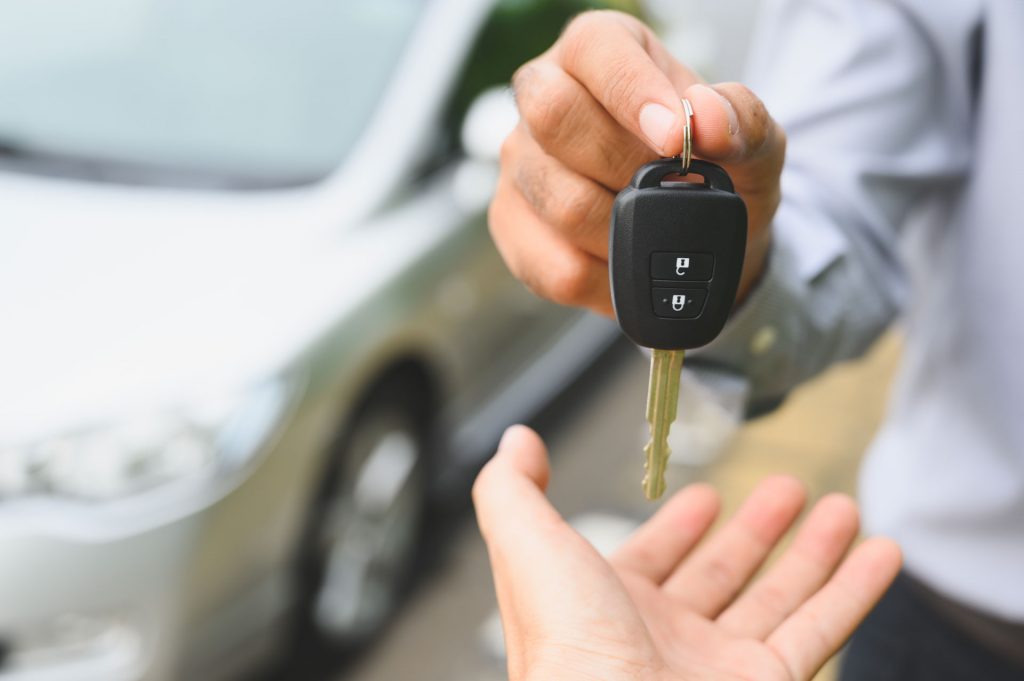
Ontario’s graduated licensing system, introduced in 1994 for all drivers applying for their first car or motorcycle license, is designed to help new drivers learn safer and better driving habits. The graduated licensing system helps drivers gain skills and experience gradually in controlled, low-risk environments. This system, which includes two road tests, normally takes at least twenty months to complete. Successfully completing the Level Two (G2) road test gives applicants full Class G driving privileges.
Building on the basic driving skills necessary for passing the Level One road test, the Level Two test assesses the advanced knowledge and skills that generally come with driving experience. During the test, the examiner will give certain directions for you to follow and will check to see that you have successfully performed all necessary actions associated with these tasks.
Expressway driving is included in the G2 exit road test. Before completing this portion of the test and to show that you have enough experience in driving on expressways, you must fill out and sign a “Declaration of Highway Driving Experience.” This form includes space for you to indicate how often in the last three months you have driven on a freeway or highway with a speed limit of 80 km/h or higher. Also included in this section is space to indicate the average length of the trips on these roads in kilometre ranges. For example, you might say that most trips were under five kilometres or between five and fifteen kilometres. Freeways where you can gain this experience include: 400, 401, 402, 403, 404, 405, 406, 407, 409, 410, 416, 417, 420, 427, Queen Elizabeth Way, Don Valley Parkway, Gardiner Expressway, E. C. Row Expressway and the Conestoga Parkway.
Gaining sufficient freeway experience before the test is essential, as otherwise the examiner will have to cancel the test as being “out of order.” In that case, you will lose half of your prepaid road-test fee and be required to pay the fifty percent again when you reschedule the test. Be sure to gain experience before attempting the test again to avoid having the same situation occur.
The following pages describe the maneuvers and tasks that are part of the Level Two road test. This guide will give you a basic idea of the tasks involved with driving.
Left and right turns
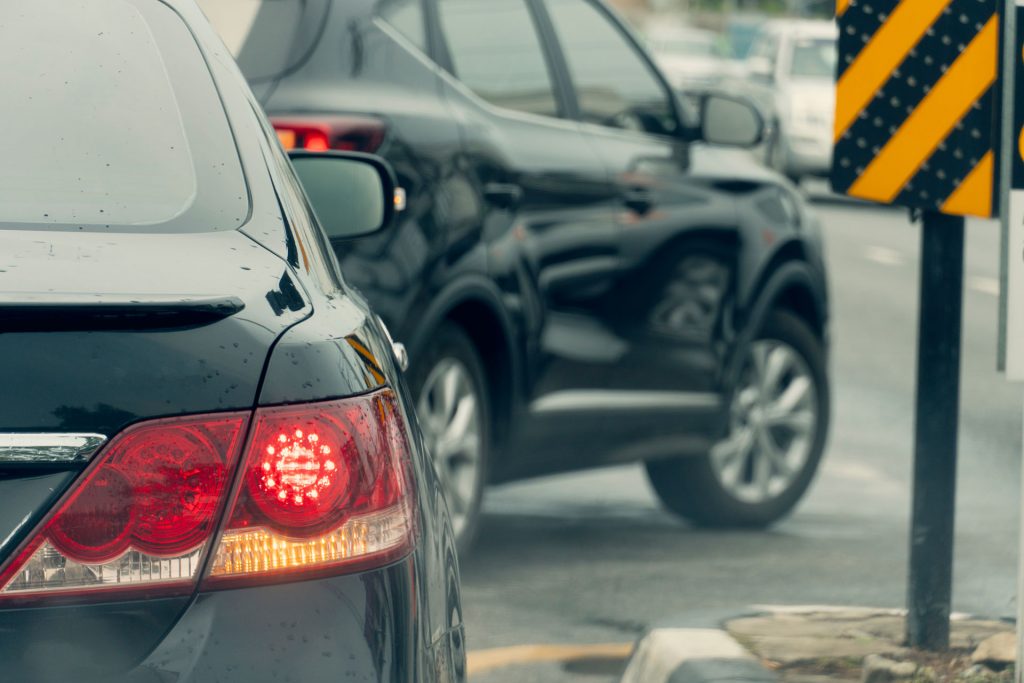
Approaching a Turn
This segment starts when the examiner gives an instruction to make a turn to the right or left. It ends just before the vehicle enters the intersection. While performing this task, be sure to take these precautions:
Traffic check
Before you begin to slow down, be sure to check for traffic around you, using the rear view and side mirrors to look for any vehicles behind you. When changing lanes, look over your shoulder to check your blind spot.
Lane
When it is safe, move into the far left or far right lane to make the turn.
Signal
Before slowing down for a turn, be sure to turn on your signal. One exception is when other vehicles on side roads or driveways between your vehicle and the intersection are waiting to enter the road. In that case, you should wait to signal until you are beyond these entrances to ensure that the other drivers will not be confused and think that you are turning before the intersection.
Speed
As you approach the intersection, you should slow down steadily. In manual transmission vehicles, an option is to downshift to a lower gear while slowing down. Never coast while pressing down on the clutch pedal.
Space
As always, keep at least a two- to three-second gap between your vehicle and the one in front of you as you slow down.
Stopping
This driving task may be necessary if you must stop before completing your turn, such as when either the street is blocked or because you are facing a stop sign or a red light. Follow these procedures to complete this task safely:
Stop
Come to a full stop without allowing your vehicle to roll backwards or forwards. When possible, drive forward slightly to check for traffic or to begin the turn. Do not back up if you must stop a second time past the stop line.
Space
If you come to a stop behind another vehicle at an intersection, be sure to allow enough space for pulling out and passing without the need to back up. The extra space will allow you to pull out from behind a stalled vehicle while also reducing the chances of colliding with the vehicle ahead if you are hit from behind. Also, it reduces the chances of a collision in case the vehicle ahead backs up or rolls into the vehicle behind it.
Stop line
When approaching an intersection with a red light or stop sign where no other vehicles are ahead of you, look for a stop line painted on the pavement. Stop behind that line, or if there is no line marked, stop at the crosswalk, whether or not it is marked. If the intersection has no crosswalk, stop at the edge of the sidewalk or at the edge of the intersection if there is no sidewalk.
Wheels
Keep your front wheels straight while waiting to make a left turn. This will keep your vehicle from being pushed into oncoming traffic if you are hit from behind. Also keep your wheels straight while waiting to turn right to prevent being pushed into pedestrians crossing the intersection. If an intersection where you intend to turn right has curved sidewalks, direct your vehicle to follow the curb to avoid having another vehicle coming between you and the curb.
Completing the turn
Certain actions are part of the driving task of making a turn. Remember these steps for turning safely:
Check for Traffic
Continue to scan the road around you, even when you have stopped at a red light or are unable to continue until traffic clears. Before entering the intersection, check for traffic in each direction (left, right and straight ahead) to be sure that you can enter the road safely. In cases where the right-of-way is doubtful, try to make eye contact with anyone who might cross your path, including drivers, pedestrians and cyclists. Also remember to check your blind spot before turning in case another vehicle overtakes you at that point.
Attempt to make eye contact with any drivers, cyclists or pedestrians who might cross your path if the right-of-way is uncertain. Before turning, remember to check your blind spot before turning in case another vehicle overtakes you while you are still performing the maneuver. Also, take care to ensure that other road users are not forced to take evasive actions to avoid your vehicle when they have the right-of-way.
Use both hands
Since you are at the greatest risk from other vehicles when you are turning, be sure to use both hands throughout the maneuver. Having both hands on the wheel allows you maximum steering control a your most vulnerable point. However, one exception to this recommendation is for people who are unable to use both hands due to a disability.
Shifting Gears
Avoid shifting gears while turning in a vehicle with manual transmission. If it is necessary to do so, shift gears as soon as the vehicle begins moving but before it moves far into the turn. In an intersection with more than four lanes, you are allowed to shift gears if you would otherwise slow down traffic. Normally, remaining in the same gear will help you better control your vehicle while turning.
Speed
Once it is safe to begin, move forward within four to five seconds. Drive at a steady speed through the beginning but move faster as you complete the turn. Be sure to travel at a speed that allows you to maintain control of your vehicle without slowing down the flow of traffic.
Turning wide/short
On the intersecting road, turn into the lane corresponding to the one you are leaving without crossing over curbs or lane markings.
Completing the turn
The turn is complete when this driving task is accomplished. The task starts at the point of entering the intersecting road and ends at the return to normal traffic speed. Follow these steps at this point:
Lane
On ending your turn, move into the lane corresponding to the lane that you turned from. For a left-hand turn onto a multi-lane road, resume normal traffic speed and when it is possible to do so safely, move into the curb lane. For a right-hand turn where the right lane is unavailable due to parked vehicles or other barriers, turn into the next available lane.
Traffic check
While returning to normal traffic speed, use your mirrors to monitor the traffic situation on the road you have joined.
Speed
Accelerate smoothly to return to normal traffic speed and blend with the traffic around you. Accelerate at a moderate rate in light traffic. A faster acceleration may be necessary in heavy traffic. For vehicles with manual transmissions, shifting gears as you increase speed is necessary.
Stopping at an intersection
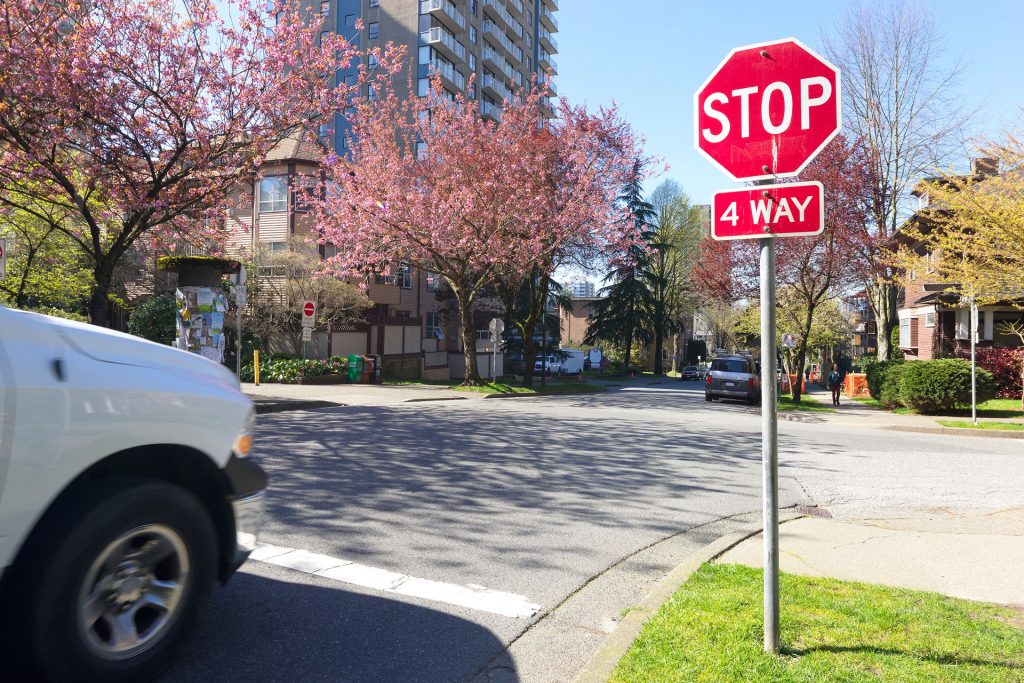
Approaching Intersections
This segment of the test takes place at intersections requiring a complete stop, beginning at the point where the intersection becomes visible and ends as the vehicle enters the intersection. These actions are necessary for successfully completing this task:
Traffic check
Look all around your vehicle before beginning to slow down, using your mirrors to check for traffic behind you.
Speed
Reduce your speed at a steady pace as you approach the intersection. Downshifting to a lower gear as you slow down is an option in manual transmission vehicles. Remember not to coast while pressing on the clutch pedal.
Space
Maintain the two- to three-second following distance between your vehicle and the one in front of you, even while slowing down.
Stopping
This segment of the test includes any actions you take your vehicle is stopped and you are waiting to enter the intersection. Keep these points in mind:
Stop
Come to a full stop at the intersection, not allowing your vehicle to roll backwards or forwards. When a sufficient space becomes available, drive forward slowly to check for available space or to move across the intersection. Do not back up if you must stop a second time after passing the stop line.
Space
On stopping behind another vehicle at an intersection, be sure to leave enough space between the two vehicles to be able to pull out and pass if necessary, without backing up. This tactic helps protect you in three ways: it will leave enough space for you to pull out from behind a stalled vehicle, it helps prevent your vehicle from being pushed into the vehicle in front if you are hit from behind and it lowers the chances of being hit by the vehicle in front if it rolls or backs up.
Stop line
When approaching an intersection with a red light or stop sign where no other vehicles are ahead of you, look for a stop line painted on the pavement. Stop behind that line, or if there is no line marked, stop at the crosswalk, whether or not it is marked. If the intersection has no crosswalk, stop at the edge of the sidewalk or at the edge of the intersection if there is no sidewalk.
Driving through
This task includes the necessary procedures for driving through an intersection and accelerating to a normal traffic speed. Prepare for the following actions:
Traffic check
Continue to be aware of the traffic around you as you wait for a green light or for the way to be clear. Immediately before entering the intersection, check for traffic to the left, straight ahead and to the right. If the right-of-way is in doubt, attempt to make eye contact with other nearby road users. If another road user with the right-of-way must take evasive action to avoid your vehicle, it means that you have not checked for traffic properly.
Use both hands
Since you are at the greatest risk from other vehicles when you are going through an intersection, be sure to use both hands throughout the maneuver. Having both hands on the wheel allows you maximum steering control at your most vulnerable point. However, one exception to this recommendation is for people who are unable to use both hands due to a disability.
Gears
Avoid shifting gears while going through an intersection in a vehicle with manual transmission. If it is necessary to do so, shift gears as soon as the vehicle begins moving but before it moves far into the intersection. In an intersection with more than four lanes, you are allowed to shift gears if you would otherwise slow down traffic. Normally, remaining in the same gear will help you better control your vehicle.
Traffic check
When returning to normal traffic speed, be sure to check for traffic around you, using the rear view and side mirrors to look for any vehicles behind you. When changing lanes, look over your shoulder to check your blind spot.
Speed
Once it is safe to start, move ahead within four to five seconds. Accelerate smoothly as you return to traffic speed and blend in with the other vehicles around you. Accelerate at a moderate pace in light traffic or more quickly in heavier traffic. In a manual transmission vehicle, shift gears as you speed up.
Going through an intersection

The approach to an intersection
This driving task applies to intersections which may not require a stop. It begins at the point where the intersection becomes visible and ends just before the point where the road enters the intersection. Here are some tips for this maneuver:
This driving task is done at intersections where you may not need to stop. It begins at the point where you can see the intersection and ends just before the entrance to the intersection. Remember to do the following:
Traffic check
On the approach to the intersection, check to the left and right for traffic on the intersecting road. If you must slow down fir the intersection, first check in your mirrors for traffic coming up from behind you.
Speed
Maintain your speed through the intersection unless you see a possibility of other traffic crossing the intersection in front of you. In that case, slow down or hold your foot above the brake as you prepare to slow down or stop. Be careful to watch for pedestrians intending to cross the intersections and for vehicles moving into the intersection, either slowly or at higher speeds.
Space
Maintain a distance of at least two to three seconds between your vehicle and the one in front of you.
Driving through the intersection
This portion of the test concerns what you do from the moment you enter the intersection to the point when you have crossed it and are resuming normal traffic speed. Here are some points to consider:
Lane
Stay within the lane markings and do not change lanes while driving through the intersection. If your lane is blocked, such as by a vehicle turning left or someone edging into the intersection from the right, slow down or stop rather than attempting to drive around the vehicle.
Both hands
Hold the steering wheel with both hands while driving through the intersection, as the danger from other vehicles is greatest at this point. Keeping both hands on the steering wheel gives the maximum steering control at a point of great vulnerability. However, this technique may be impossible for drivers with a disability that prevents them from using both hands.
Changing Gears
When driving a vehicle with a manual transmission, avoid changing gears while crossing the intersection. If a gear change is necessary, you should do this immediately after the vehicle starts moving but before it progresses far into the intersection. When remaining in the same gear would impede traffic, you are also allowed to shift gears in an intersection that is wider than four lanes. However, staying in the same gear generally gives you more control over your vehicle.
Checking for traffic
After slowing down for an intersection, check your mirrors again to ensure that it is safe before resuming normal traffic speed.
Freeway
Entering a Freeway
This procedure starts on an entrance ramp to a freeway and ends when the vehicle has reached the speed of traffic on the freeway. Remember these steps:
Check for Traffic
As you wait on the ramp, check in your mirrors and blind spot for a chance to merge safely. While you do this, take note of any vehicles in front of you on the ramp and maintain a safe distance from them. Divide your attention between the vehicles in front and checking your mirrors and blind spot for a chance to merge safely with traffic.
Signal
Unless you have already done so, turn on your signal light as soon as drivers on the freeway are likely to be able to see your vehicle on the ramp.
Space
As elsewhere, maintain a two- to three-second gap between your vehicle and the one in front while on the ramp and merging with freeway traffic. Monitor other traffic as you merge so that you do not move in beside another vehicle or into a driver’s blind spot. In heavy or rapidly moving traffic where it would be difficult to stay at the correct following distance behind another vehicle, slow down or speed up to try to get the best spacing possible. Remember to stay inside the lane markings on the ramp and in the acceleration lane.
Speed
While going around the curve of an entrance ramp, drive slowly enough that objects and people in the vehicle are not pushed to one side by the force created by turning the curve. When you enter the acceleration lane, begin to increase your speed to match the flow of freeway traffic. Control your speed while merging to blend smoothly with traffic on the freeway.
Merge
Merge with freeway traffic in a smooth, gradual movement to the centre of the nearest freeway lane.
Cancel signal
Turn off your signal as soon as you have merged with freeway traffic.
Driving along the road
This section tests what you do while driving along the freeway but not merging, changing lanes or exiting. In this section, remember these points:
Check for Traffic
As you drive, look for traffic around your vehicle and check in your mirrors every five or ten seconds.
Speed
Avoid driving either over the speed limit or unreasonably slowly. If you can, maintain a steady speed. Look for dangerous situations or obstacles twelve to fifteen seconds ahead on the road so that you can avoid them by altering your speed.
Space
Remember to maintain at least a distance of two to three seconds between your vehicle and the one on front of you. If another vehicle is following too closely behind you, increase the space in front of your vehicle or change lanes if possible. Also try to maintain space on the right and left sides of the vehicle while keeping out of the blind spots of other drivers. Avoid travelling behind large vehicles as their large size means that they block your view of traffic more than other vehicles.
Exiting
This driving task begins when your vehicle is on the far right-hand side of the freeway within sight of the exit you want to take. It concludes when the vehicle reaches the end of the exit ramp. Keep these procedures in mind:
Check for traffic
Be sure to check for traffic on the left and right on the road and to check your mirrors before moving into the exit lane. Remember to check the blind spot on your right if another lane, such as an acceleration lane leading from a paved shoulder or an entrance ramp, is on that side.
Signal
Remember to turn on your signal light before reaching the exit lane.
Exit lane
Use a smooth and gradual movement to enter the exit lane at the beginning, staying within the lane markings. In places with two or more exit lanes, wait for the solid lines on the pavement to end before changing lanes.
Speed
Wait to slow down until your vehicle is entirely in the exit lane. At that point, slow down gradually if you can do so without impeding traffic. If the exit ramp has a curve, keep your speed slow enough to keep objects and people inside from being pushed to one side by the outward force of the turn. When driving a vehicle with a manual transmission, an option is to downshift as your vehicle slows down.
Space
Remember to keep at least a two- to three-second distance of space between your vehicle and the one in front.
Cancel signal
Always turn off your signal once your vehicle is on the exit ramp.
Changing Lanes
The driving task of changing lanes starts when you begin to look for an opportunity to change lanes and ends when the lane change is complete. Keep these steps in mind:
Check for traffic
Continue to scan the road as you wait for a chance to change lanes safely. Be sure to watch in front and to check the mirrors and your blind spot. If another lane is beyond the one that you intend to move into, check for traffic in that lane in case another vehicle is moving into the lane at the same time.
Signal
When you have an opportunity to change lanes, turn on your signal light. Once you have done that, check your blind spot once more before you begin to move into the other lane. Be sure to give other drivers behind you the chance to react to the signal. In heavy traffic, you may turn on your signal even before you see a chance to change lanes. That way, drivers behind you will know that you are attempting to change lanes.
Space
Maintain a minimum distance of two to three seconds behind the vehicle in front of you. If another lane is beyond the one that you are changing into, watch that you do not move in beside another vehicle or into another driver’s blind spot.
Speed
Slow down or speed up to match the flow of traffic in the new lane.
Change
Use a smooth, gradual movement to move into the centre of the new lane.
Both hands
Keep both of your hands on the steering wheel while you change lanes to give you maximum steering control. One exception is for people with a disability that prevents the use of both hands.
Cancel signal
Remember to cancel your signal once you have finished changing lanes.
Roadside stop
The approach
This component begins when the examiner instructs you to stop and ends when you perform the operation. Follow these procedures:
Traffic check
Before applying the brakes, check your mirrors for possible hazards and check for signs indicating if the move is legal to make the roadside stop. Check for traffic along the road approaching from the front and rear of your vehicle. Try to leave a 150-metre gap in both directions to ensure that you have enough space to perform the move safely. If any pedestrians or traffic can potentially overtake your vehicle on the right, check your right blind spot immediately before you pull over.
Signal
Begin signalling before you slow down unless other vehicles are waiting to enter the road from side roads or driveways between your vehicle and the spot where you plan to stop. To avoid confusing these drivers into thinking that you intend to turn before the spot where you plan to stop, wait to signal until you have passed those spots.
Speed
Slow down steadily while approaching the stop. If you are in a vehicle with manual transmission, an option is to downshift to a lower gear while slowing down. Be sure not to coast while depressing the clutch pedal.
Position
Stop with your vehicle parallel to the curb within about 30 centimetres of it. In situations where the road has no curb, pull your vehicle over as far as you can reasonably get off the travelled section of the road. Be sure not to block an entrance or to impede other traffic.
Stopping
This task relates to the procedures that you follow after stopping. Follow these steps:
Signal
Switch off your right turn signal and turn on your hazard lights.
Park
For an automatic transmission vehicle, put the gear shift in Park and set the parking brake. For manual transmission vehicles, shift into Neutral and set the parking brake if you are keeping the engine running, or shift into a low gear or reverse if you are turning off the engine. If you park on a hill, set your wheels against the curb in the direction that will keep the vehicle from rolling if the brakes fail.
Resume Driving
This segment starts with the instruction to move back onto the road and ends when you resume normal traffic speed. Remember these steps:
Start
First start the engine. Then release the parking brake and choose the appropriate gear for rejoining traffic on the road.
Signal
Disengage the hazard lights and turn on your left turn signal.
Check for Traffic
Immediately before leaving the spot, remember to check your mirrors and blind spot for traffic.
Speed
Accelerate smoothly to return to normal traffic speed and blend with the traffic around you. Accelerate moderately in light traffic. A quicker acceleration may be necessary in heavier traffic. Shift gears as needed in a manual transmission vehicle as you increase your speed.
Cancel signal
Cancel your signal light once you have returned to the road.
Going around a curve
This segment starts as the curve comes into view and ends when the vehicle has completed the curve. Remember these steps:
Speed
On coming to a curve, try to assess the safest speed for negotiating the bend. The best way to do this is to look for road signs or other clues indicating a safe speed. Other clues include the shape of the curve and the type of road. Begin to slow down to the appropriate speed for the curve within 30 metres into it. Reduce your speed even more in blind curves where you are unable to see around the entire curve in case an oncoming vehicle wanders into your lane or the curve is unexpectedly tight. Be sure to slow down before entering the curve to avoid braking in the middle of it. Drive slowly and steadily enough so that objects and people inside the vehicle are not pushed to one side by the force created by the turn. As you approach the end of the curve, begin to accelerate to return to the normal speed. Do not shift gears in a manual transmission vehicle while going around a curve. Staying in the same gear gives you more control over your vehicle while reducing the risk of the wheels locking while you downshift.
Lane
Look as far as possible around the curve as you enter it. Doing this will help you maintain a smooth line and stay centred in the lane as you go around the curve. Looking only at the road directly ahead of you will likely force you to correct your steering constantly as you wander back and forth across the lane.
Business section
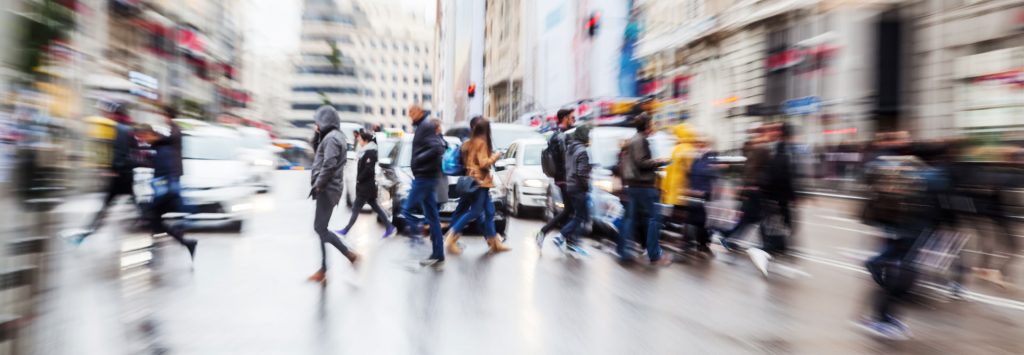
Check for traffic
Business areas have many areas other than intersections where vehicles or pedestrians could enter the road, including entrances to businesses, institutions, construction sites or pedestrian and railway crossings. Check to the right and left for vehicles or pedestrians entering the road in these areas.
Check the mirror
As you drive, check in your mirrors for traffic about every five to ten seconds or more often in heavy traffic. The same applies in situations where drivers are moving at different speeds.
Lane
Drive in the best and safest lane for through traffic, normally the curb lane. However, the centre lane may be safer if the curb lane is blocked or has too many curbside hazards. Stay in the centre of your lane and remain within the lane markings. Always scan the road ahead 12 to 15 seconds to help you evade dangerous situations or change lanes to avoid obstacles in your path.
Speed
Avoid driving either over the speed limit or unreasonably slowly. If you can, drive at a steady pace. Always scan the road ahead 12 to 15 seconds to help you evade dangerous situations or change lanes to avoid obstacles in your path.
Space
Remember to maintain at least a distance of two to three seconds between your vehicle and the one on front of you. If another vehicle is following too closely behind you, increase the space in front of your vehicle or change lanes if possible. Also try to maintain space on the right and left sides of the vehicle while keeping out of the blind spots of other drivers. Avoid travelling behind large vehicles as their large size means that they block your view of traffic more than other vehicles. If you stop behind another vehicle, be sure to leave enough space so that you can see the vehicle’s rear wheels. That way, you should be able to pull around it without having to back up.
Residential section
This driving task occurs on straight sections of rural or residential roads. Keep these points in mind

Check for traffic
While driving on residential roads, watch for potential traffic hazards such as the entrances to schools, pedestrian crossings, driveways or sidewalks. On rural roads, drivers should be careful to watch for entrances to residences, farms, businesses and industrial sites. As always, drivers should look to the left and right to check for vehicles or pedestrians potentially entering the road.
Mirror check
Check your mirrors every five to ten seconds as you drive along, or more often in heavy traffic or roads where vehicles are moving at different speeds.
Lane
Say in the centre of the lane, or in the centre of the travelled part of the road where there are no lane markings so that you can avoid parked vehicles and pedestrians. If a curve or a hill blocks your long-distance view, move to the right to avoid possibly colliding with an oncoming vehicle veering over the centre line. Scan ahead 12 to 15-seconds’ length for any dangerous situations or obstacles that might require a lane change.
Speed
Avoid either exceeding the speed limit or driving unreasonably slowly for the traffic flow but rather drive at a steady speed where possible. Scan ahead 12 to 15-seconds’ length for any dangerous situations or obstacles that might require a lane change.
Space
Maintain at least a two- to three-second distance between you and the vehicle in front of you, or more if another vehicle follows too closely behind you. In slow traffic, try not to drive behind vehicles large enough to block your view of traffic ahead. If you stop behind another vehicle, be sure to leave enough space to see its rear wheels so that you will have enough room to pull around it without having to back up.
Parallel park
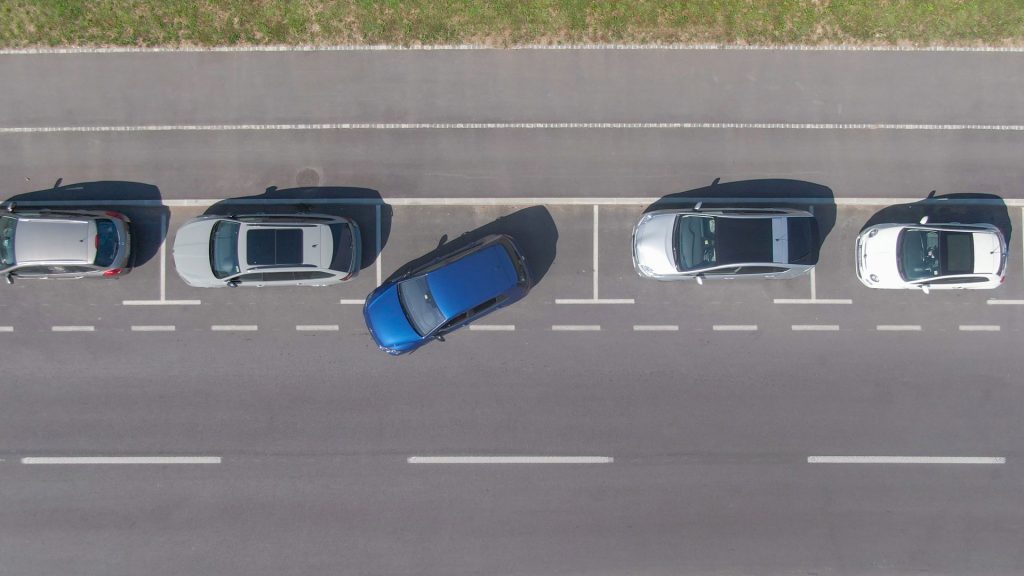
The approach
This segment starts when the examiner instructs you to park and ends when you have come to a stop in preparation for backing into the parking space. Keep these points in mind:
Check for traffic
Check your mirror for traffic before you slow down. Check your blind spot before pulling into the right position to back up.
Signal
Begin to signal before you slow down unless other drivers about to enter the main road are waiting at side roads or driveways between you and your stopping point. To avoid confusing other drivers who may think you are turning into one of these spots, delay signalling until you have passed these entrances.
Speed
Reduce your speed steadily. In a manual transmission vehicle, you may choose to downshift to a lower gear as you slow down, but do not coast while pressing on the clutch pedal.
Stop
Stop your vehicle parallel to, or beside, the real or imaginary vehicle ahead of the empty parking space, leaving at least 60 centimetres between your vehicle and the one that is parked. Stop when your entire vehicle is positioned in front of the empty parking space.
Park
This segment involves the various steps necessary for parallel parking in an appropriate space. Follow these steps:
Check for traffic
Scan all the way around your vehicle, checking your mirrors and both blind spots before you back up. Wait to reverse until the road is clear or until other drivers have stopped to allow you the chance to park.
Back up
Start to reverse into the space as you turn the steering wheel towards the curb. At about the halfway point into the space, turn the steering wheel so that the vehicle is in line with the curb. When you get into the parking space, adjust the position of your vehicle forwards or backwards to fit into the pavement markings or to allow space for other vehicles to pull in or out. Be careful not to hit the curb or another vehicle while performing this maneuver. If the road has no curb, park off of the travelled part of the road.
Park
In an automatic transmission vehicle, select the Park option and set the parking brake. In manual transmission vehicles, set the parking brake and shift into Neutral if you are keeping the engine running or into a low gear or reverse if you are turning the engine off. For parking on a hill, turn your wheels in the appropriate direction that will keep your vehicle from rolling away in the event that the brakes fail.
Resume
This task starts when the examiner instructs you to leave the parking space and ends when you have rejoined traffic at a normal speed. Keep these points in mind:
Start
Start the engine, release the parking brake, and select the right gear for getting the vehicle driving along the road.
Signal
Turn on your signal.
Check for traffic
Check your mirrors and blind spot just before you pull out of the parking spot.
Speed
Accelerate smoothly to blend with traffic and to return to normal traffic speed or moderately in light traffic. When traffic is heavier, faster acceleration may be necessary. In manual transmission vehicles, shift gears as your speed increases.
Cancel signal
Once you have left the parking spot, cancel your signal.
Three-point turn
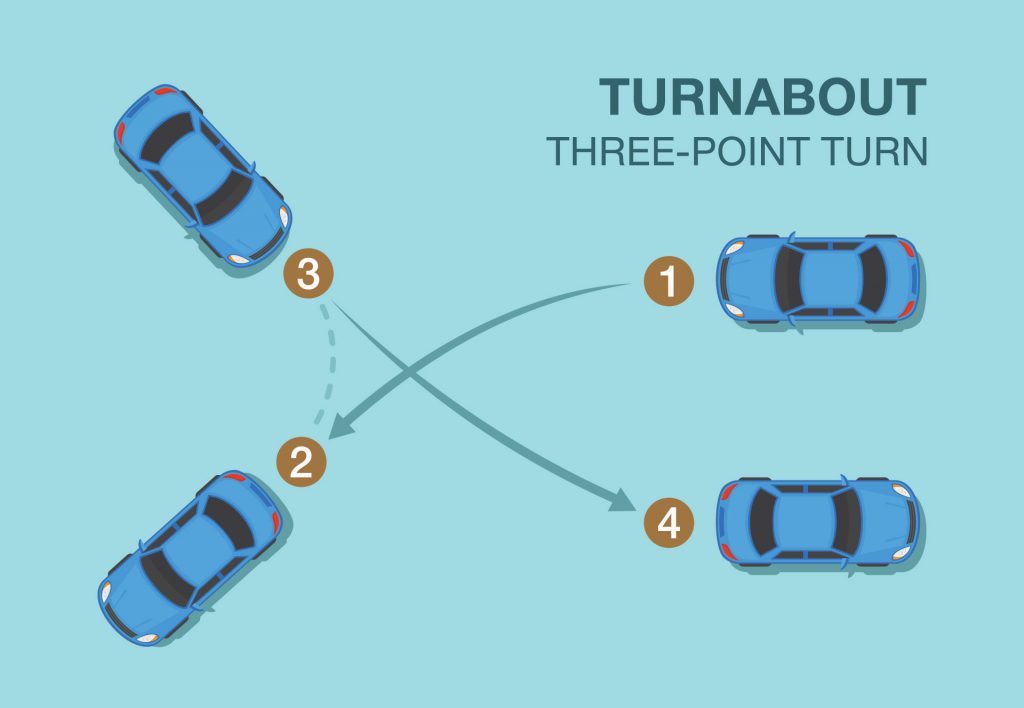
The approach
This segment starts when the examiner instructs you to stop and turn the vehicle around and ends when you are almost at a standstill and are prepared to begin the turn. Keep these factors in mind:
Check for traffic
Check for traffic ahead and behind you before slowing down. Check your blind spot if necessary before you pull over to the right side of the road to stop.
Signal
Before you slow down, turn on your signal. One exception is if vehicles are waiting to enter the road where you are driving from side roads or driveways located between you and your stopping point. In that case, drive past these entrances before signalling so that other road users will not think that you are turning into these other spots.
Speed
Reduce your speed steadily. In a manual transmission vehicle, an option is to downshift to a lower gear while slowing down. Remember not to coast with your foot pressing on the clutch pedal.
Position
Stop at a point parallel to and within 30 centimetres of the curb. If the road has no curb, pull as far away from the travelled section as possible. Be careful not to block an entrance or other traffic.
Turn around
This segment tests your ability to follow the procedures for turning around and ends when you have completed the turn and are ready to drive away in the opposite direction. Keep these points in mind:
Check for traffic
Before you start the turn, look in your mirrors and check your blind spot. Do not begin the turn until the road is clear or drivers have stopped to allow you the chance to turn. At each point when you stop turning, be sure to check in both directions for traffic.
Signal
Before you begin the turn, engage your left turn signal.
Turn around
Turn the steering wheel sharply to the left and then move slowly and smoothly across the road. At the far left side of the road, stop your vehicle and shift to Reverse. Turn the steering wheel sharply to the right and reverse until the vehicle is facing in the new direction. Stop and shift into Drive or first gear so that you can move ahead. Manage the turn so that you use the whole road and reverse only once. Be sure to avoid reversing over the edge or shoulder of the road or driving over the curb.
Resume
This part begins when you have turned around and are ready to move forward. It ends when you have resumed the normal speed of traffic. Follow these steps:
Check for traffic
Before increasing your speed, check in your mirrors for traffic.
Speed
Accelerate smoothly to return to normal traffic speed and to blend with other vehicles around you. Accelerate moderately in light traffic but more quickly as needed in heavier traffic. In manual transmission vehicles, shift gears as necessary while your speed increases.
